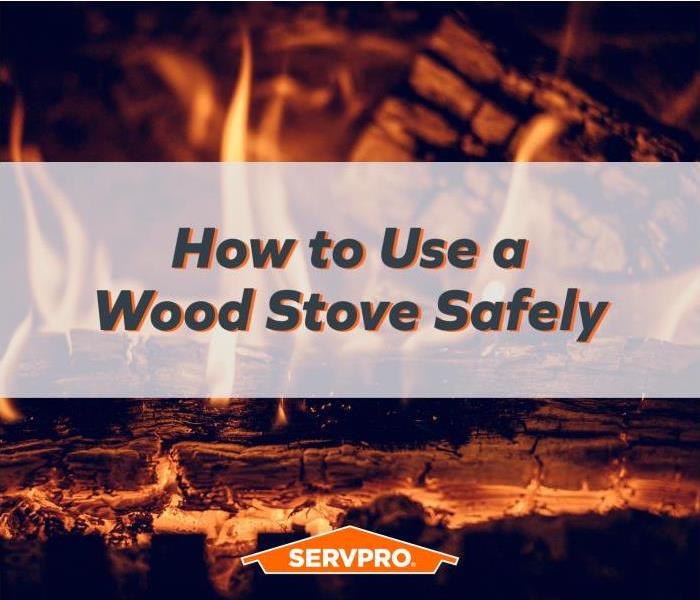How to Use a Wood Stove Safely
1/6/2022 (Permalink)
 If your home experiences fire due to a wood stove or other source, give SERVPRO of St. Charles City a call. We are here to help.
If your home experiences fire due to a wood stove or other source, give SERVPRO of St. Charles City a call. We are here to help.
During the bitter cold winter months, many homeowners use alternatives to their home heating systems, such as fireplaces, pellet stoves or wood stoves. Each of these heating methods has its benefits and can provide an excellent heat source. If properly installed, maintained, and operated, each can provide years of warmth safely and efficiently. However, using wood stoves also presents risks, such as accidental fires and carbon monoxide poisoning. Proper use of wood stoves can help to significantly reduce the chances of a fire breaking out in your home.
Alternative heat sources do require a certain amount of upkeep for operation and safety. Wood stoves are no exception. So, what can you do to keep your wood stove operating in peak condition? First, let’s look at the type of wood stoves.
Types of Wood Stoves
There are many types and styles of wood stoves suitable for home heating, but most wood stoves can be categorized as either freestanding or a wood stove insert.
A wood stove insert fits into the fireplace opening and vents through the chimney. Some come equipped with a blower to help circulate the heat.
A free-standing wood stove connects to the chimney through a chimney connector. Some may share the flue of an existing or they may vent into a separate chimney built for the stove.
Using the Wood Stove
Be sure to have your chimney inspected to determine if it can be used with a wood stove, because wood stoves generate very hot combustion gases, its chimney must be either masonry or manufactured specifically for burning wood.
If you have a freestanding wood stove, make sure it is located closely to the chimney to limit the length of the flue pipe. When installing, make sure you have easy access to inspect and clean both the stove and chimney connector.
If you have recently moved into a home with a wood burning stove, it’s a good idea to have an inspection performed. This can help make sure it's ready and safe to use, and the inspector may be able to give you some tips on its use.
Never use a freestanding wood stove on a combustible surface such as a wood floor, and it should not be connected to a chimney flue that services another appliance. This could cause a fire or release carbon monoxide.
While wood stoves can provide savings in heating your home, there are some do’s and don’ts to keep in mind to help avoid potential risks, such as burns, fire or carbon monoxide poisoning.
Do:
- Keep children and pets away when you have a fire burning in the stove, as the outer surfaces of the stove and flue pipe are very hot. And keep anything that can burn at least 3 feet away from the stove.
- Make sure you have working carbon monoxide and smoke alarms in your home. Alarms—both fire and carbon monoxide—should be located outside each sleeping area and on every level of the home.
- Regularly remove ashes and properly dispose of them—but do not put them directly into a trash can. Ashes can take several days to cool completely. Instead, place ashes in a covered metal container located at least 10 feet away from buildings or vehicles.
- Have your chimney cleaned and inspected regularly; ideally, at the start of the heating season. It is also a good idea to have it checked halfway through the burning season to check for any creosote buildup.
- Have your wood stove inspected by a professional at least once every year for any wear and tear, especially to the door hinges, the combustion chamber and the connection between the stove and chimney.
- Keep an eye out for any damage or unusual wear and tear, such as buckling, cracks in the glass, open seams or cracks in or corrosion of the metal.
Don’t:
- “Over fire" the stove—in other words, make a larger fire than the stove can handle. Over firing will result in flames entering the flue pipe or chimney, and can cause damage to the stove, the chimney connector or the chimney itself, which could result in a house fire. To avoid over firing, check the instruction manual or with the manufacturer.
- Let ashes build up in the bottom of the stove, as they can interfere with the air flow into the combustion chamber, trap heat and take longer to extinguish.
- Burn anything other than wood in your wood stove. Other combustibles, such as rubber, plastics, garbage or coal, can damage your stove and could also explode or give off toxic, hazardous fumes.
By taking these precautions, you’re ready to use your wood stove during these cold winter months.
If you do experience smoke or fire damage from your wood stove, we are here to help. For professional fire damage remediation, contact SERVPRO of St. Charles City.





 24/7 Emergency Service
24/7 Emergency Service